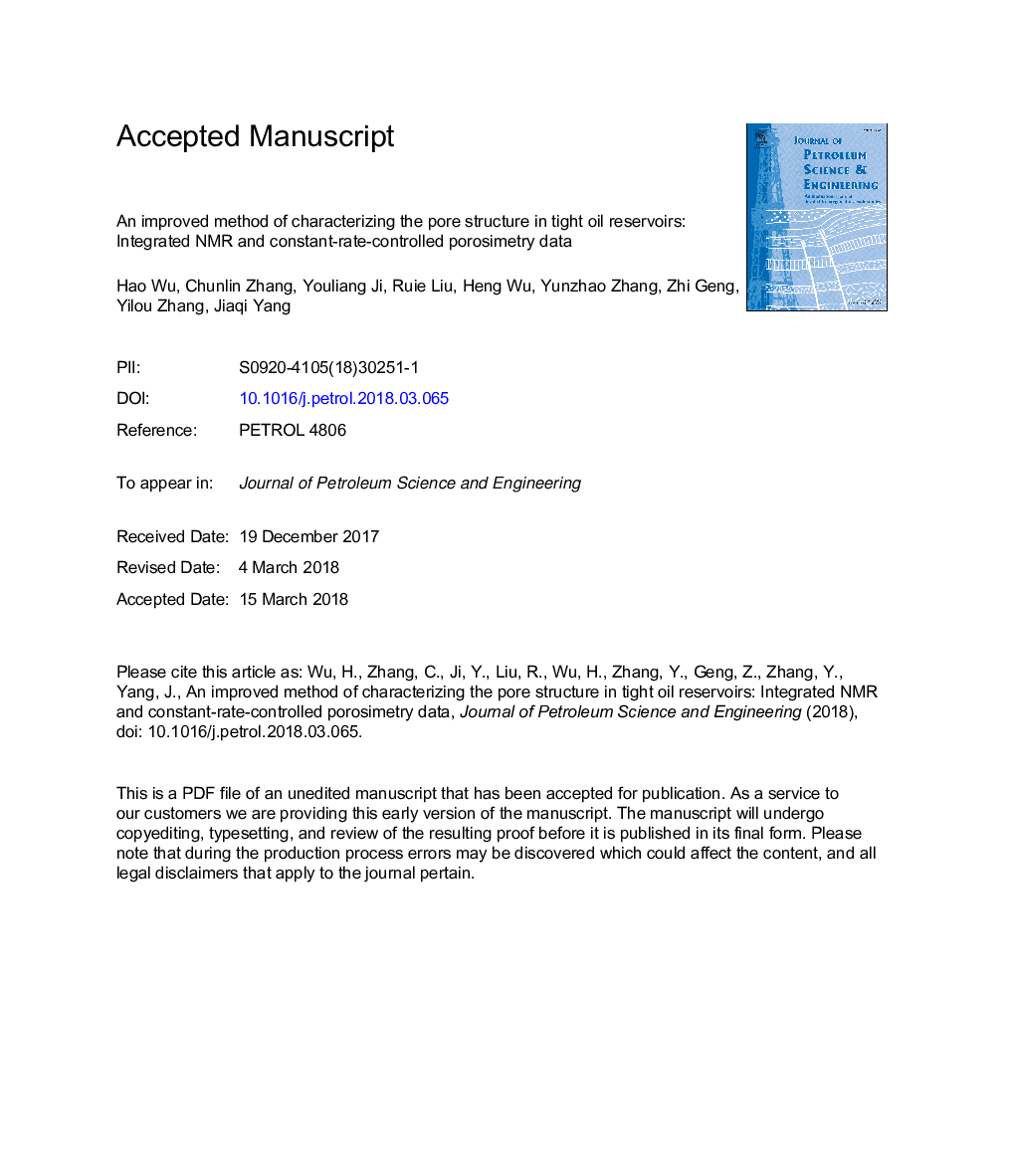| کد مقاله | کد نشریه | سال انتشار | مقاله انگلیسی | نسخه تمام متن |
|---|---|---|---|---|
| 8124991 | 1522775 | 2018 | 56 صفحه PDF | دانلود رایگان |
عنوان انگلیسی مقاله ISI
An improved method of characterizing the pore structure in tight oil reservoirs: Integrated NMR and constant-rate-controlled porosimetry data
دانلود مقاله + سفارش ترجمه
دانلود مقاله ISI انگلیسی
رایگان برای ایرانیان
کلمات کلیدی
موضوعات مرتبط
مهندسی و علوم پایه
علوم زمین و سیارات
زمین شناسی اقتصادی
پیش نمایش صفحه اول مقاله

چکیده انگلیسی
Tight oil reservoirs have an ultrafine pore structure with a large heterogeneity, which requires the integration of multiple techniques to characterize pore structure characteristics systematically and, therefore, to gain a better understanding of reservoir quality. Tight oil sandstone samples from the Upper Triassic Yanchang Formation in the Ordos basin were measured by nuclear magnetic resonance (NMR), constant-rate-controlled mercury porosimetry (CMP) and field emission scanning electron microscopy (FE-SEM) to investigate the pore structure characteristics and their control on petrophysical properties. Various types of pores from intergranular pores, dissolution pores, and intercrystalline pores to small microfractures occurred in the studied tight sandstones, which indicates that the NMR T2 distributions may be unimodal or bimodal in behaviour with a wide range. The short components of the T2 distributions match the CMP-derived throat size distributions regarding the dimensions, width and shape of the curves. We combined CMP and NMR to uncover the total pore size distribution; the size distributions of the throat and pore body range from 0.01 to 1â¯Î¼m and from 0.1â¯Î¼m to tens of microns respectively, which match the FE-SEM results. The pore body-to-throat ratio may be the important factor affecting the free water saturation in the pore body, which, in turn, is probably associated with the mineralogy of tight sandstones, in particular, the quartz, feldspar and clay mineral contents. The pore radius of 0.3-0.5â¯Î¼m is the percolation threshold. The seepage porosity rather than total porosity overwhelmingly dominates the permeability, which, in turn, relates to the pore types, i.e., mesopores and macropores. An improved permeability prediction model is presented for tight oil reservoirs based on the contribution from different pore size intervals to the permeability. This model has a distinctly better performance than the classic models such as the Timur-Coates and SDR models and may be generalized to other similar reservoirs with ultrafine pore structures and significant volumes of clay minerals.
ناشر
Database: Elsevier - ScienceDirect (ساینس دایرکت)
Journal: Journal of Petroleum Science and Engineering - Volume 166, July 2018, Pages 778-796
Journal: Journal of Petroleum Science and Engineering - Volume 166, July 2018, Pages 778-796
نویسندگان
Hao Wu, Chunlin Zhang, Youliang Ji, Ruie Liu, Heng Wu, Yunzhao Zhang, Zhi Geng, Yilou Zhang, Jiaqi Yang,